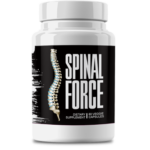This Village-Made Chinese Pain Reliever Eliminates Back And Joint Pain!
Elbow Joint Pain During Workouts: Tips for Prevention

Introduction to Elbow Joint Pain During Workouts
Elbow joint pain during workouts can be a significant hurdle for fitness enthusiasts. Whether you're lifting weights, practicing yoga, or engaging in high-intensity interval training, elbow pain can disrupt your routine and progress. Understanding the root causes and implementing preventative measures is crucial for maintaining healthy joints and achieving your fitness goals. This blog post will delve into the common causes, symptoms, and prevention tips for elbow joint pain. We’ll also touch on exercises to strengthen your elbows and when to seek professional help. Let's explore how to keep your elbows pain-free during workouts.
Understanding Elbow Joint Pain
Elbow joint pain is a common issue among athletes and fitness enthusiasts, often resulting from stress or injury to the joint. The elbow is a complex hinge joint composed of bones, muscles, tendons, and ligaments, all working in harmony to facilitate arm movements. When any of these components are strained or injured, it can lead to pain and discomfort. Understanding the underlying causes of elbow joint pain can help in effectively addressing and preventing it. In the following sections, we will explore the importance of addressing elbow joint pain promptly to avoid long-term damage and ensure optimal performance.
Importance of Addressing Elbow Joint Pain
Ignoring elbow joint pain can lead to chronic issues that might hinder your workout routine and overall fitness levels. Early intervention is key to preventing the progression of minor aches into severe injuries. Addressing elbow pain promptly not only helps in maintaining your workout regimen but also ensures long-term joint health. By recognizing the symptoms early and taking corrective measures, you can avoid complications such as tendinitis, bursitis, or even stress fractures. Therefore, it's essential to pay attention to your body's signals and take proactive steps to manage and prevent elbow joint pain.
Common Causes of Elbow Joint Pain During Workouts
Overuse Injuries
One of the most common causes of elbow joint pain during workouts is overuse injuries. These occur when repetitive motions put excessive strain on the elbow, leading to inflammation and pain. Activities like weightlifting, tennis, or repetitive arm movements in various sports can result in overuse injuries. Over time, this continuous stress can cause conditions such as tennis elbow or golfer's elbow. To prevent overuse injuries, it's crucial to incorporate rest periods into your training regimen and avoid repetitive motions that can strain the elbow joint.
Poor Technique
Using poor technique during workouts is another significant factor contributing to elbow joint pain. Incorrect form can place unnecessary stress on the elbow, leading to discomfort and potential injury. Whether you're lifting weights, performing push-ups, or engaging in other upper body exercises, using the correct technique is vital. It's beneficial to seek guidance from a fitness professional or coach to ensure you're performing exercises correctly. By maintaining proper form, you can reduce the risk of elbow joint pain and enhance the effectiveness of your workouts.
Inadequate Warm-Up
Failing to warm up properly before workouts can lead to elbow joint pain. A proper warm-up increases blood flow to the muscles and joints, preparing them for the physical activity ahead. Without a thorough warm-up, your muscles and joints are more susceptible to strains and injuries. Incorporating dynamic stretches and light aerobic exercises into your warm-up routine can help prevent elbow joint pain. By spending adequate time warming up, you can enhance your performance and reduce the risk of injury.
Improper Equipment
Using improper equipment during workouts can also contribute to elbow joint pain. For example, lifting weights that are too heavy or using equipment that doesn't fit your body properly can place undue stress on the elbow joint. It's essential to choose equipment that is suited to your fitness level and body mechanics. Additionally, ensuring that your workout space is ergonomically designed can help prevent unnecessary strain on the elbows. By using appropriate equipment, you can minimize the risk of elbow joint pain and enhance your workout experience.
Symptoms and Early Signs of Elbow Joint Pain
Aching or Sharp Pain in the Elbow
The initial symptom of elbow joint pain is often an aching or sharp pain in the elbow. This pain can occur during or after workouts, indicating that the joint has been strained. Paying attention to this early sign is crucial to prevent further injury. If you experience persistent or worsening pain, it's important to take a break from activities that exacerbate the discomfort. Addressing the pain early can help you avoid more severe injuries and ensure a quicker recovery.
Swelling and Tenderness
Swelling and tenderness around the elbow joint are common symptoms of elbow joint pain. These symptoms indicate inflammation and can be accompanied by warmth and redness. Swelling can limit your range of motion and make it difficult to perform certain exercises. Applying ice and taking anti-inflammatory medications can help reduce swelling and alleviate pain. If the swelling persists or worsens, it's advisable to seek medical attention to rule out more serious conditions.
Reduced Range of Motion
Reduced range of motion in the elbow is another early sign of joint pain. You may find it challenging to fully extend or flex your elbow without experiencing discomfort. This limitation can affect your ability to perform various exercises and daily activities. Stretching and strengthening exercises can help improve the range of motion and alleviate pain. However, if the reduced range of motion persists, it's important to consult a healthcare professional for a thorough evaluation and appropriate treatment.
Tips for Preventing Elbow Joint Pain
Proper Warm-Up and Stretching
One of the most effective ways to prevent elbow joint pain is through proper warm-up and stretching. A comprehensive warm-up routine should include dynamic stretches that target the muscles and joints around the elbow. Stretching helps increase flexibility and reduces the risk of strains. Incorporating wrist and forearm stretches can also be beneficial. By dedicating time to warm up and stretch before workouts, you can prepare your muscles and joints for the physical demands of exercise and reduce the likelihood of elbow joint pain.
Correct Workout Techniques
Using correct workout techniques is crucial for preventing elbow joint pain. Ensuring that you maintain proper form during exercises can help distribute the load evenly and minimize stress on the elbow joint. If you're unsure about your technique, consider working with a fitness professional who can provide guidance and corrections. Additionally, focusing on controlled movements and avoiding jerky or rapid motions can reduce the risk of injury. By prioritizing proper technique, you can enhance the effectiveness of your workouts and protect your elbows from pain.
Using Appropriate Equipment
Choosing and using appropriate equipment is essential for preventing elbow joint pain. Ensure that weights, resistance bands, and other workout tools are suitable for your fitness level and goals. Using equipment that is too heavy or not designed for your body mechanics can increase the risk of injury. It's also important to regularly inspect and maintain your equipment to ensure it's in good condition. By using appropriate equipment, you can create a safer workout environment and reduce the likelihood of elbow joint pain.
Gradual Increase in Workout Intensity
Gradually increasing the intensity of your workouts can help prevent elbow joint pain. Sudden increases in workout intensity can place excessive stress on the joints, leading to pain and injury. A progressive approach allows your muscles and joints to adapt to the increased demands gradually. Incorporate incremental changes in weight, duration, and intensity to avoid overloading the elbow joint. By taking a gradual approach, you can build strength and endurance while minimizing the risk of elbow joint pain.
Exercises to Strengthen the Elbow Joint
Forearm Strengthening Exercises
Forearm strengthening exercises are beneficial for preventing elbow joint pain. Strong forearm muscles provide better support to the elbow joint, reducing the risk of strain. Exercises such as wrist curls, reverse wrist curls, and grip strengthening can help build forearm strength. Incorporating these exercises into your routine can enhance overall arm stability and reduce the likelihood of elbow joint pain. Start with light weights and gradually increase the resistance as your strength improves.
Wrist Flexor and Extensor Workouts
Wrist flexor and extensor workouts are effective for strengthening the muscles around the elbow joint. These exercises target the muscles responsible for wrist movement, which play a crucial role in elbow stability. Wrist flexion and extension exercises can be performed using dumbbells or resistance bands. By regularly incorporating these workouts into your routine, you can improve the strength and flexibility of the muscles supporting the elbow, reducing the risk of joint pain.
Triceps and Biceps Strengthening
Strengthening the triceps and biceps is essential for maintaining healthy elbow joints. These muscles are directly involved in elbow movement and stability. Exercises such as tricep dips, tricep extensions, bicep curls, and hammer curls can help build strength in these areas. Ensure that you use proper form and avoid overloading the muscles to prevent strain. By focusing on triceps and biceps strengthening, you can enhance the support around the elbow joint and reduce the risk of pain.
When to Seek Professional Help
Persistent Pain Despite Rest
If you experience persistent elbow joint pain despite rest and self-care measures, it's important to seek professional help. Chronic pain can indicate an underlying issue that requires medical attention. A healthcare professional can conduct a thorough evaluation to determine the cause of the pain and recommend appropriate treatment. Early intervention can prevent the progression of the condition and facilitate a quicker recovery. Don't hesitate to seek help if your pain persists.
Signs of Severe Injury
Signs of severe injury, such as intense pain, swelling, and inability to move the elbow, warrant immediate medical attention. These symptoms can indicate a serious condition like a fracture or ligament tear. Seeking prompt medical care can prevent further damage and ensure proper treatment. If you experience severe symptoms, avoid attempting to self-diagnose or treat the injury. Instead, consult a healthcare professional for a comprehensive assessment and appropriate intervention.
Recommendations for Medical Consultation
Consulting a medical professional is recommended if you have concerns about elbow joint pain. A doctor or physical therapist can provide personalized advice and treatment options based on your specific condition. They may recommend imaging studies, such as X-rays or MRI, to accurately diagnose the issue. Additionally, a healthcare professional can guide you through a tailored rehabilitation program to ensure a safe and effective recovery. Seeking medical consultation can help you address elbow joint pain comprehensively and prevent future occurrences.
Recovery and Rehabilitation from Elbow Joint Pain
Rest and Ice Application
Rest and ice application are fundamental components of recovery from elbow joint pain. Resting the affected joint allows the tissues to heal and reduces inflammation. Applying ice to the painful area can help alleviate swelling and numb the pain. It's recommended to apply ice for 15-20 minutes several times a day during the initial stages of injury. Combining rest and ice application can accelerate the healing process and provide relief from elbow joint pain.
Physical Therapy Options
Physical therapy is a valuable option for rehabilitating elbow joint pain. A physical therapist can design a customized exercise program to strengthen the muscles around the elbow and improve flexibility. Therapeutic exercises, manual therapy, and modalities like ultrasound or electrical stimulation may be used to promote healing. Additionally, a physical therapist can provide education on proper techniques and ergonomics to prevent future injuries. Engaging in physical therapy can facilitate a safe and effective recovery from elbow joint pain.
Gradual Return to Workouts
Gradually returning to workouts is crucial after recovering from elbow joint pain. It's important to avoid rushing back into intense exercise to prevent re-injury. Start with low-impact activities and gradually increase the intensity and duration as your strength and flexibility improve. Pay attention to your body's signals and take breaks if you experience any discomfort. By taking a gradual approach, you can safely reintegrate workouts into your routine and maintain healthy elbow joints.
Conclusion and Final Tips for Healthy Elbow Joints
Recap of Prevention Strategies
In conclusion, preventing elbow joint pain during workouts involves a combination of proper warm-up, correct techniques, appropriate equipment, and gradual intensity increase. By incorporating these strategies, you can reduce the risk of injury and maintain healthy elbow joints. Remember to prioritize rest and recovery, and seek professional help if you experience persistent or severe pain. Taking proactive steps to prevent elbow joint pain can enhance your workout experience and contribute to long-term joint health.
Encouraging Consistent Monitoring
Consistent monitoring of your elbow joint health is essential for preventing pain and injury. Pay attention to any signs of discomfort or changes in your range of motion. Regularly assess your workout techniques and make adjustments as needed. Additionally, incorporating strengthening and flexibility exercises into your routine can help maintain joint stability. By staying vigilant and proactive, you can ensure the health and functionality of your elbow joints.
Emphasizing Long-Term Joint Health
Emphasizing long-term joint health is crucial for sustaining an active and pain-free lifestyle. Incorporate joint-friendly practices into your daily routine, such as proper ergonomics, regular stretching, and balanced nutrition. Maintaining a healthy weight and staying active can also support joint health. By prioritizing long-term joint care, you can enjoy the benefits of a pain-free and active lifestyle. Remember, healthy joints are the foundation of a strong and resilient body.








